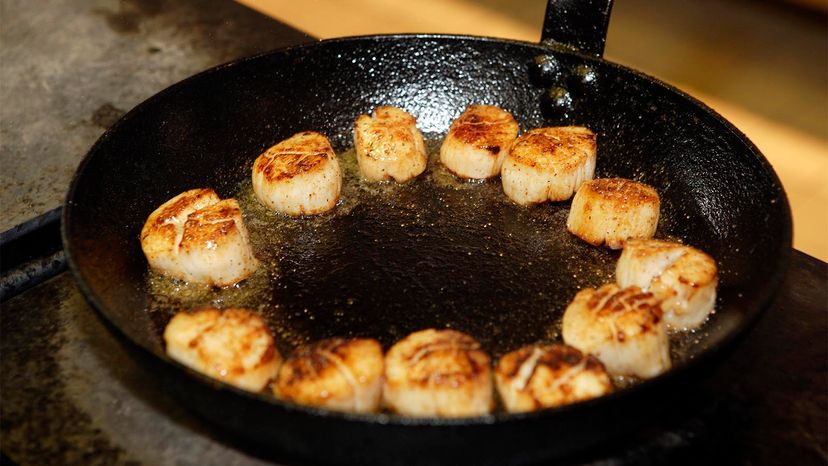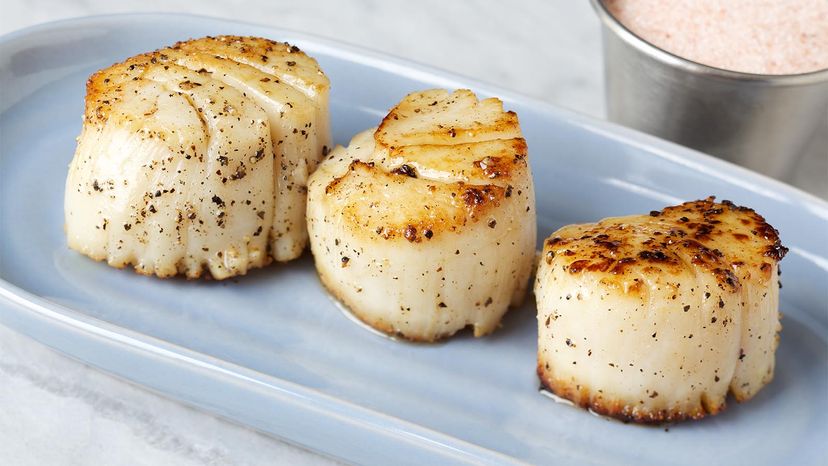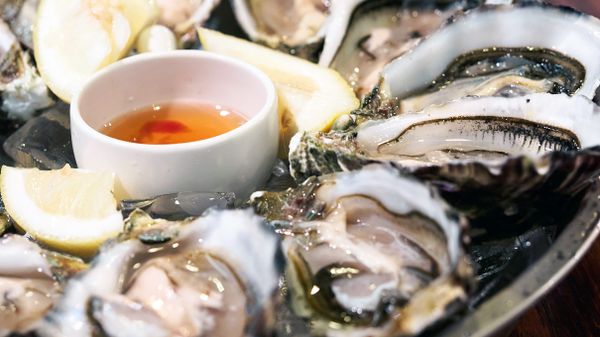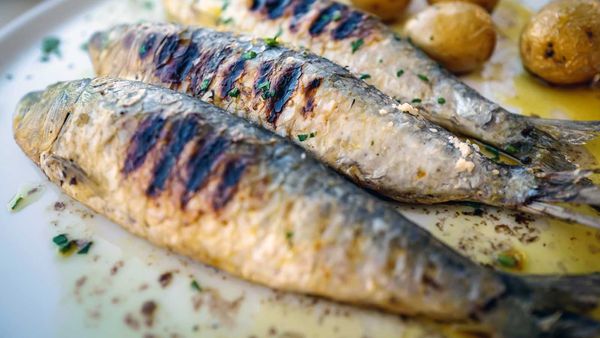Despite how fancy we feel when we eat scallops, they're not very difficult to cook. It's all about paying attention. When you unwrap them, make sure to check for any muscles — it's that small rectangular-like tough tag on the side of the scallop we mentioned earlier. You can just pinch it and pull it off. It is edible but tough when cooked.
Next, lay the scallops out on a cutting board and pat them dry on both sides with a paper towel and season with a bit of salt and pepper. "The biggest rule of thumb is to keep it simple. Don't add powerful flavors that are going to cover up the ingredient you are paying so much for," Chavannes says.
Now simply add a bit of flavorless oil with a high smoke point — grapeseed oil or olive oil are ideal — to a hot cast iron skillet and sear the scallops. "I like to use a little more oil with scallops than I do with fish," Evans says. "The reason for that is the natural sugars that are in the scallops caramelize and produce a sweet flavor and crust on the outside."
Be sure to leave enough space between the scallops. Sear for about two minutes on one side until they brown slightly. Avoid the urge to move them while they're cooking. Then flip them.
It's optional, but here you can add a tablespoon of butter to the skillet for flavor. Allow the flip side to brown and caramelize. Once done, remove from the pan and serve immediately. Perfectly cooked scallops will have a caramelized crust on the outside and remain tender and sweet inside.
Scallops pair very well with grains like couscous, grits or polenta. Evans also recommends adding them to your surf and turf. "I love it with smoked beef brisket or a Spanish style dried chorizo," he says.
Chavannes shared one of his easy recipes for scallops on the grill:
- First, chop your scallops, load into a scallop shell with a generous pat of good French butter, like Échiré, and some pine nuts.
- Put the shell on the grill and cook until the butter is bubbly and the scallops are warmed.
- Finish with a couple of sprigs of fennel and a squeeze of charred lemon. Serve immediately.



